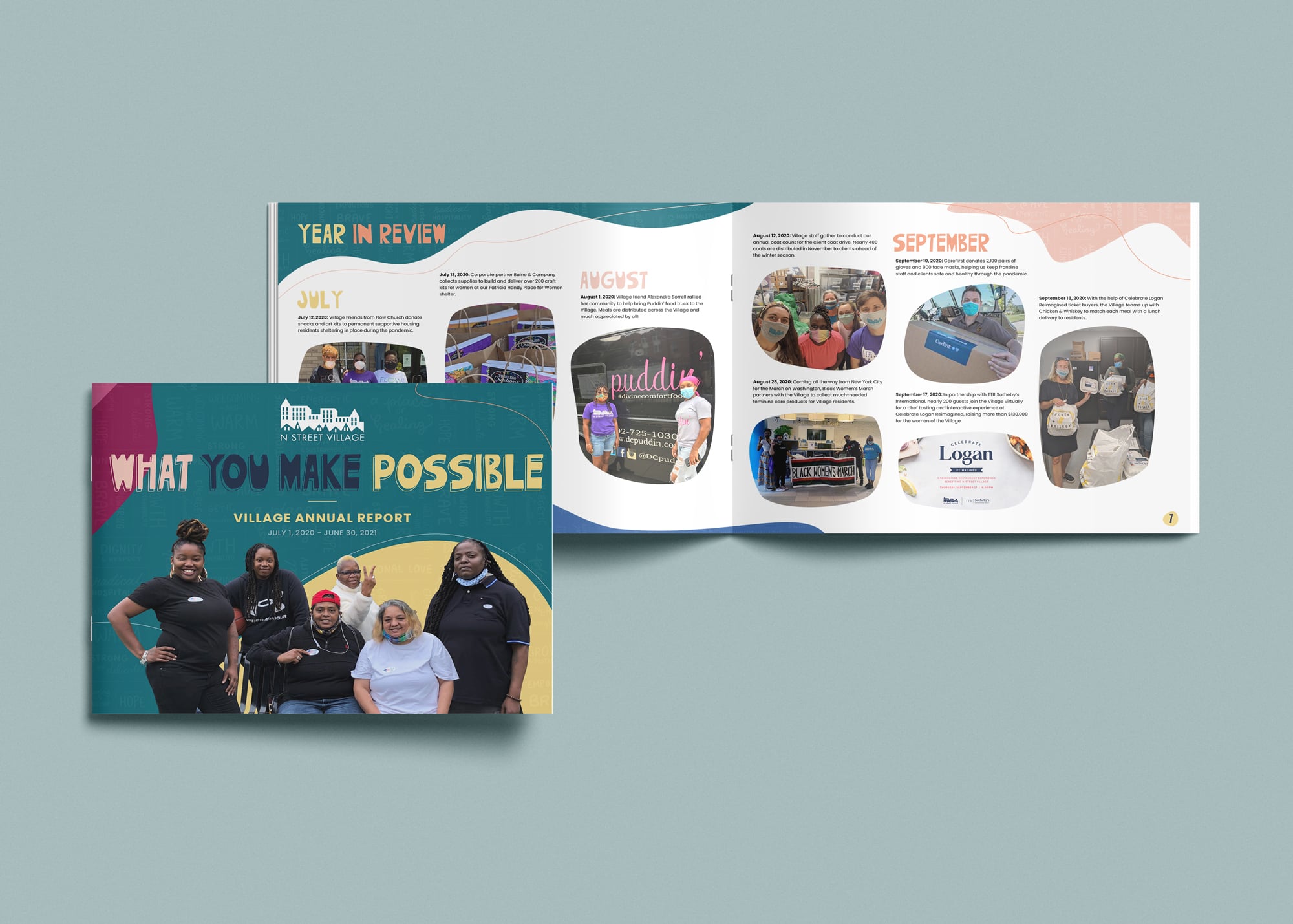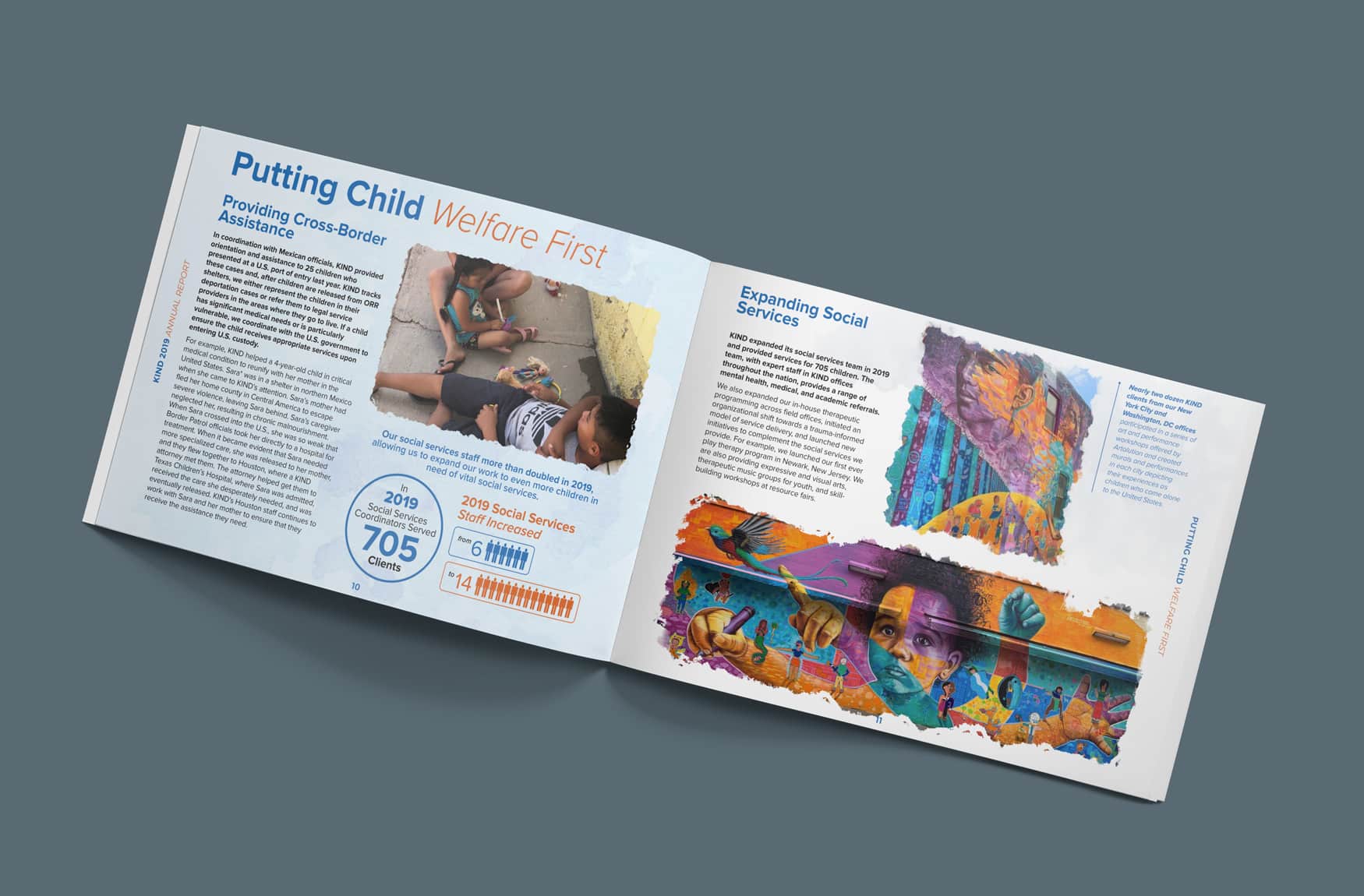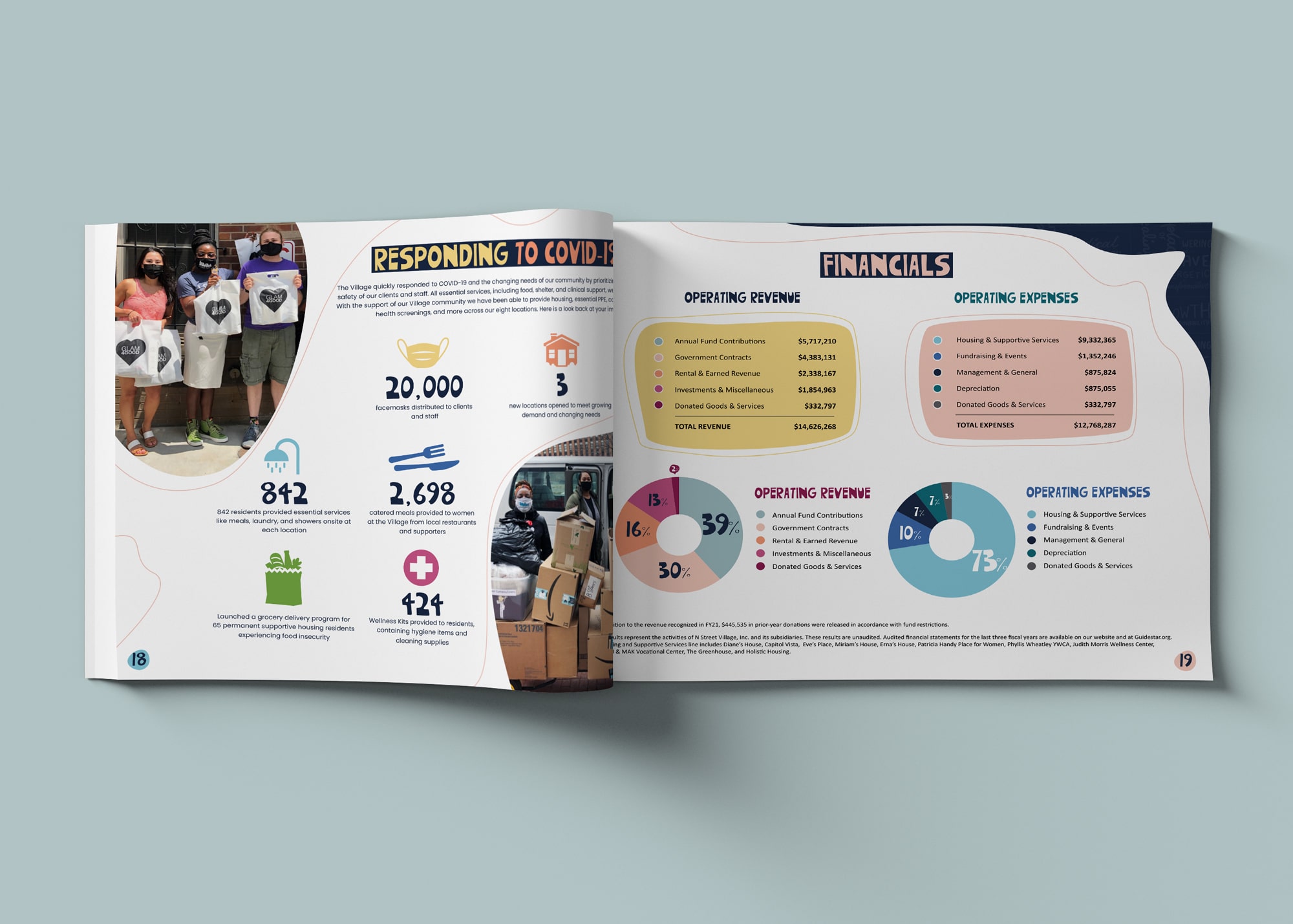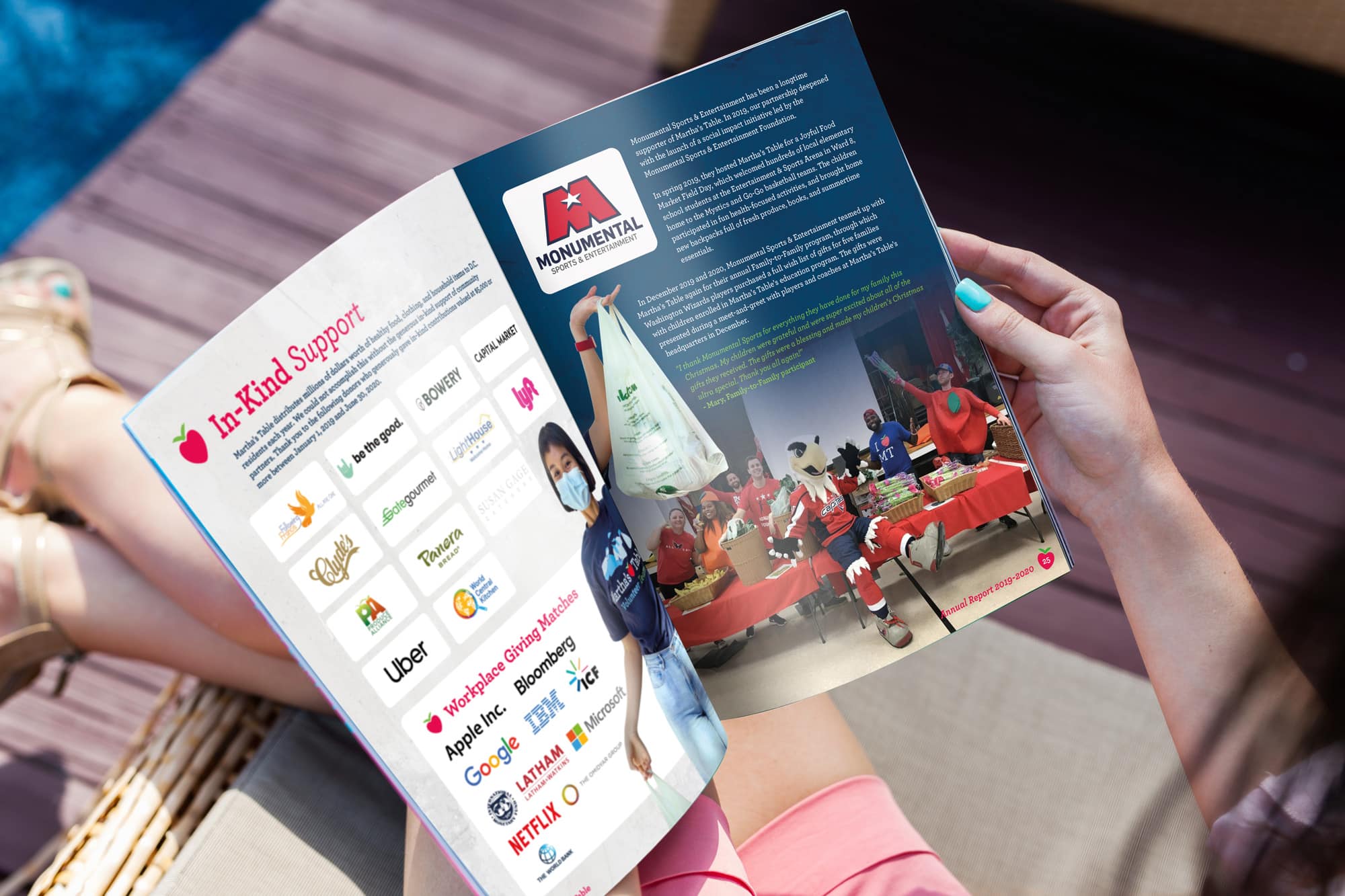Now that you are ready to write an annual report for your nonprofit, let’s take a look at what should be included and build an initial outline. When you look at well-executed annual reports, (regardless of size, length or format) you’ll find that they all include these 6 essential elements…
A clear mission and focus.
If you could boil down your organization’s values and purpose into a single sentence you would have your mission statement. Since supporters won’t be the only people reading your report, your mission statement needs to be at the very beginning. Readers should know about your organization’s mission and what change you hope to make before jumping into the data.

Major achievements of the past year.
The majority of your report should focus on your main projects or programs that you run throughout the year. From fundraising events to volunteer efforts and community programs, let readers know what your organization was able to accomplish in 12 short months.

When telling readers about your accomplishments, break down your achievements into powerful statistics using infographics your readers can easily understand and digest.
Not sure what stats to use? Here are some examples of statistics and key performance indicators that our nonprofit clients have included in the past:
Number of Clients Served this Year
Have you increased the number of clients served this year? Show your progress with a graphic comparing your numbers from past years with the current one.
Number of Bags of Food, Diapers, etc.. Given this Year
Have a specific time of year when the need for certain items increase? Break out your stats into a 12 month bar graph that illustrates those fluctuations.
Number Enrolled in your Programs or Courses
Do you offer classes or programs? Let your donors know how many have enrolled to illustrate which courses are most pertinent to your clients. Donors want to know what aid is most needed and will often personally sponsor events or programs if they know that they are highly sought after in the community.
Use Demographic Stats to Show Who you Serve
Use stats to paint a picture of the people you serve. N Street Village, for instance serves homeless women in DC. In their annual report they use client surveys to show what percentage of their clients were: living outdoors before arriving, have experienced domestic violence, were unemployed before entering their program, have a mental illness and/or addiction, etc.
Use Numbers to show the Impact your Donors Made
Show donors that the Campaigns they participated in made an impact in their community. How many families did you house this year with the money you raised? How many turkeys were you able to hand out for Thanksgiving thanks to their donations? Trying to increase recurring donations? Show how many donors gave on a monthly basis. Want to acquire more major donors or corporate sponsors? Show how many donors gave more than $100,00o in in-kind donations.
Use Numbers to Share your Success Rates
Show that your programs are effective by using numbers to show your success rates. What percentage of clients were able to secure jobs after taking your course? What percentage of clients were able to maintain sobriety a year after enrolling in your program? How many clients still have a job or housing a year after receiving aid? Grant foundations want to know that the programs they sponsor have lasting affects.

A financial statement showing how the donations you’ve received have been invested.
Let’s face it: supporters want to know how their money is being used. Being honest about your organization’s expenses helps to establish trust among your supporters. Plus, it shows potential donors that your nonprofit can manage funds responsibly and effectively. This is imperative when applying for grants or trying to acquire major corporate donors. The bigger the donation, the more likely the donor will want to see your financials and measure your cost-effectiveness. It doesn’t have to a full in-depth financial report, just a brief statement showing your operating revenue and expenses are enough to show that you are using your donations wisely and that your operating costs don’t outweigh the amount you have invested back into the community.

An account of major contributions.
In addition to showcasing your organization’s success, your annual report is also about thanking those who helped you achieve your goals. Listing out and thanking your major contributors, influential staff, and board members is a necessary part of your report. Very few donors ask to be anonymous. They like to be recognized for their contributions, especially corporate sponsors, major donors, and grant foundations. Make sure you acknowledge them, share their logos, and give ample thanks. Make them feel warm and cozy so they are eager to give again next year.

Mobilize donors for your next mission.
After sharing your accomplishments and financial responsibility, invite your donors to join you on your next mission. Donors want to know your vision for the road ahead and if they like what they see, you will ensure their support for another year. Share you plans for the future then give them a clear directive. How can they best help your nonprofit achieve your goals for next year? It doesn’t always have to be money. Maybe your organization desperately needs volunteers or pro-bono law services. Perhaps there are specific supplies that you need like diapers, food or school supplies. Talk to your program directors, make a list, then decide what would be most beneficial for your nonprofit in the coming year.
Don’t leave your call-to-action until the end. Your donors might not read your report from cover to cover. An opening message or letter from the executive director is a great way to provide context for the rest of the publication. They personalize it and help point readers to key information and calls to action.

Now that you have a basic outline of what should go into your annual report, let’s look at some best practices that nonprofit communications experts follow to create an authentic voice and persuasive message.